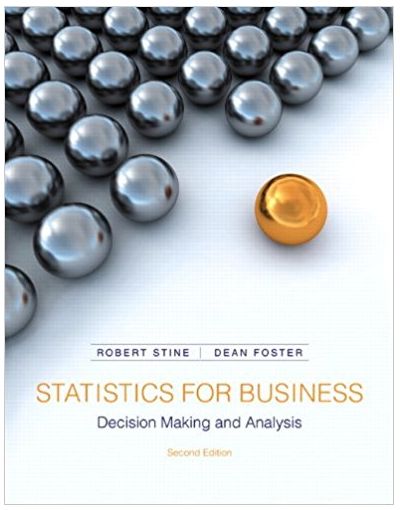1. A Poisson model is well suited to this application so long as the defects come in...
Question:
2. To use a Poisson model for the number of defects, we must assume that defects occur at an increasing rate throughout the manufacturing of the fabric.
3. An increase in the amount of fabric from 2 to 4 square yards doubles the mean of a Poisson model for the number of defects in the fabric used to make a dress.
4. An increase in the amount of fabric from 2 to 4 square yards doubles the SD of a Poisson model for the number of defects in the fabric used to make a dress.
5. A Poisson model implies that the probability of a defect in the material used to make a dress is 2 × 12 / 100.
6. A Poisson model implies that doubling the amount of fabric does not affect the chance of finding a defect in the fabric.
A textile mill produces fabric used in the production of dresses. Each dress is assembled from patterns that require 2 square yards of the material. Quality monitoring typically finds 12 defects (snagged threads, color splotching) per 100 square yards when testing sections of this fabric.
Fantastic news! We've Found the answer you've been seeking!
Step by Step Answer:
Related Book For 

Statistics For Business Decision Making And Analysis
ISBN: 9780321890269
2nd Edition
Authors: Robert Stine, Dean Foster
Question Posted:





